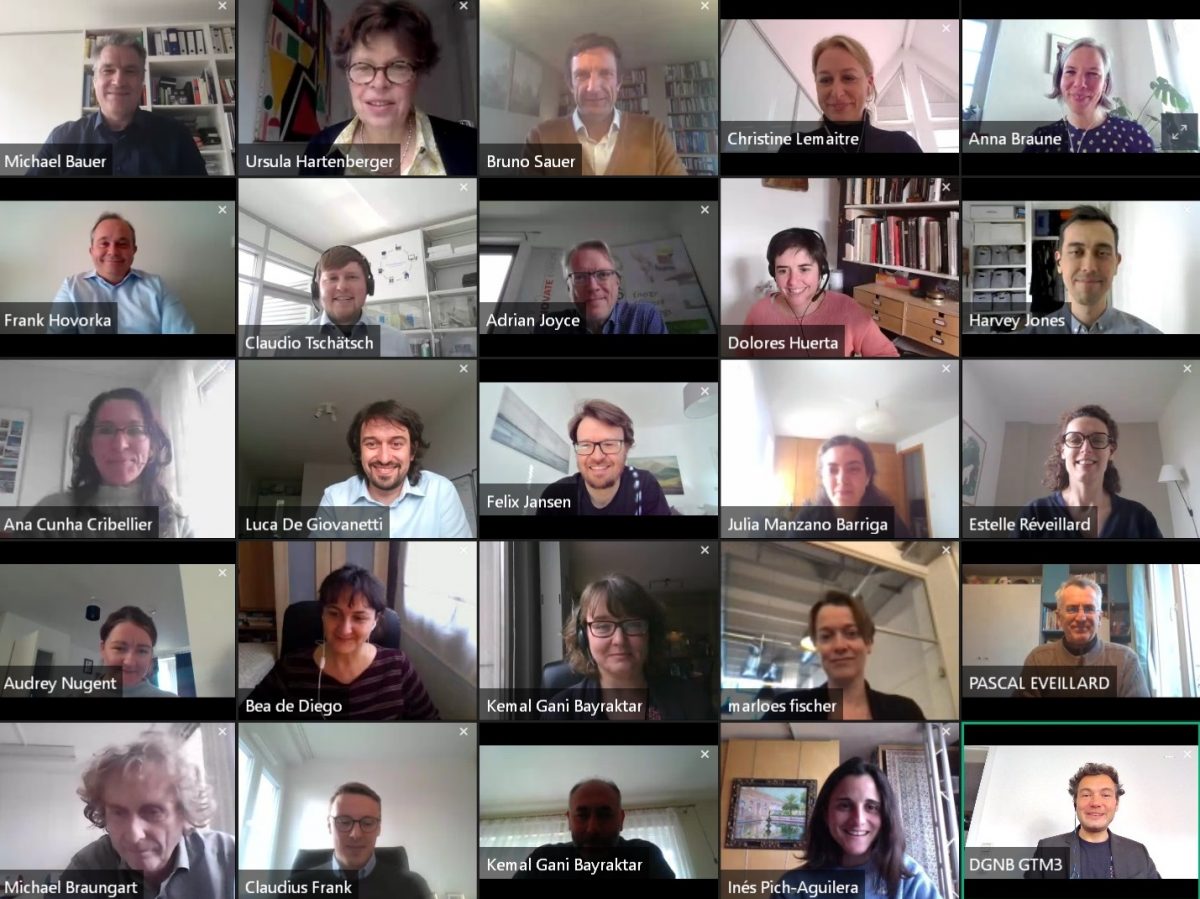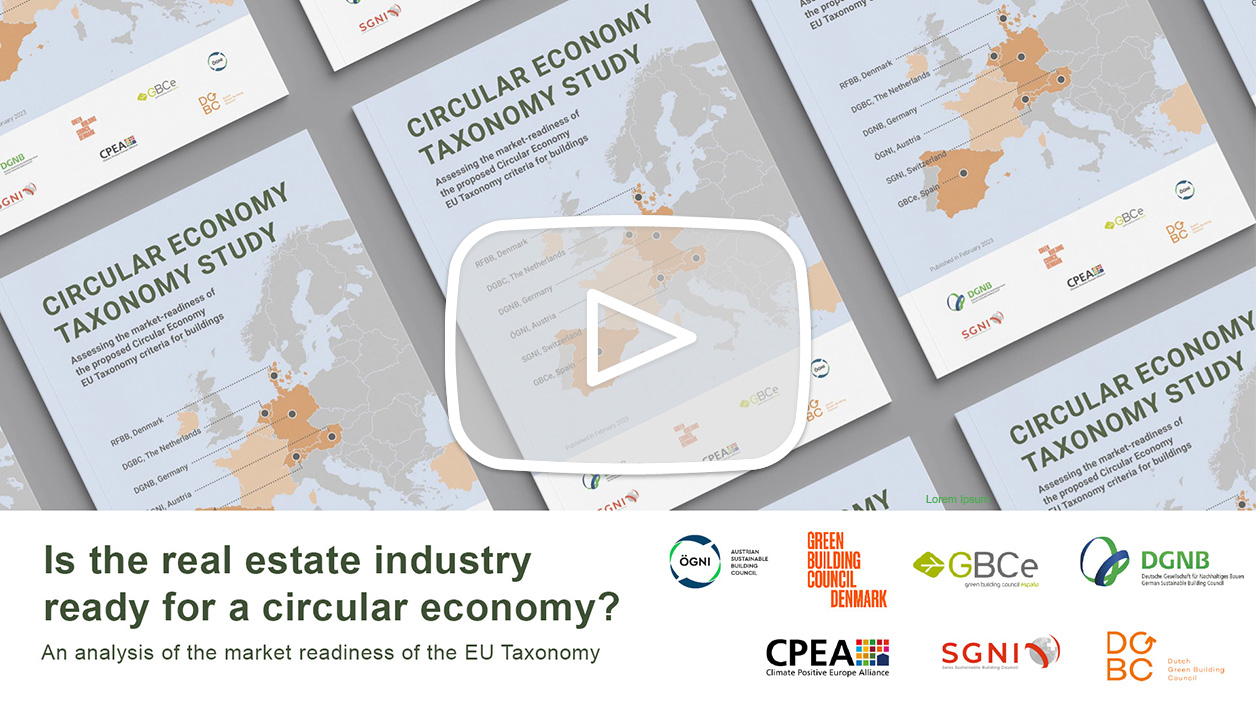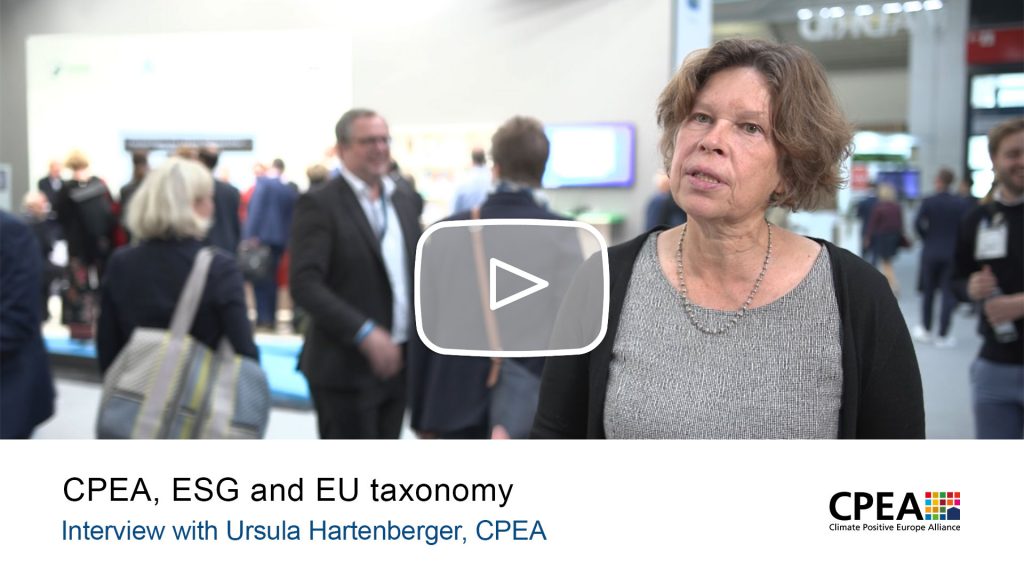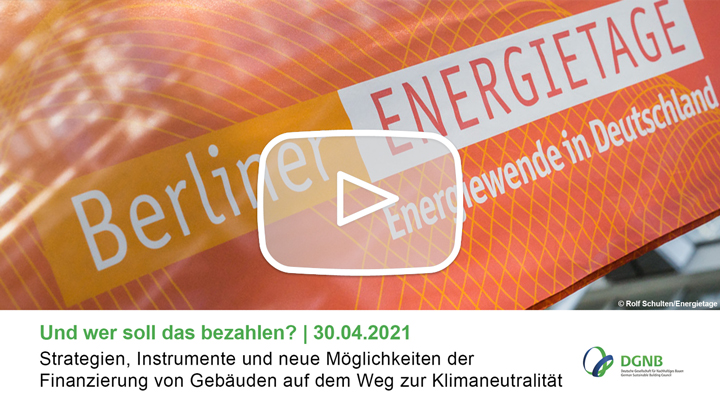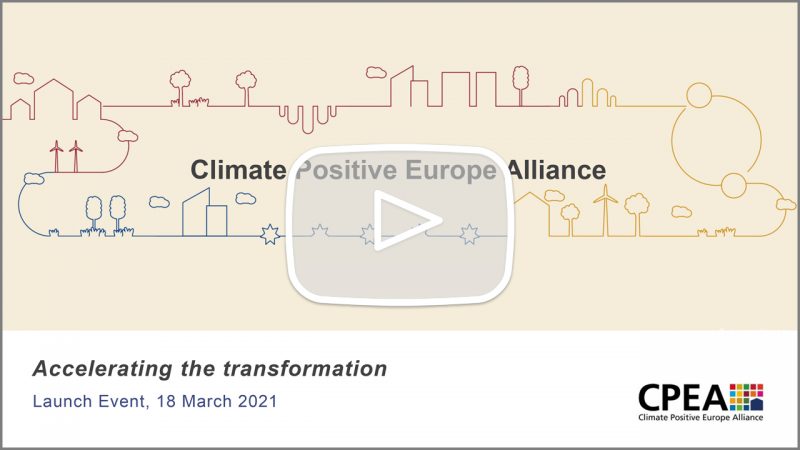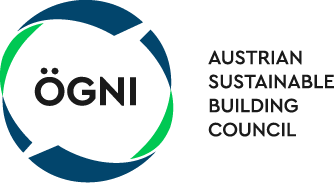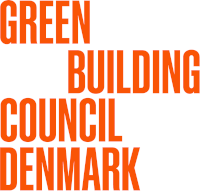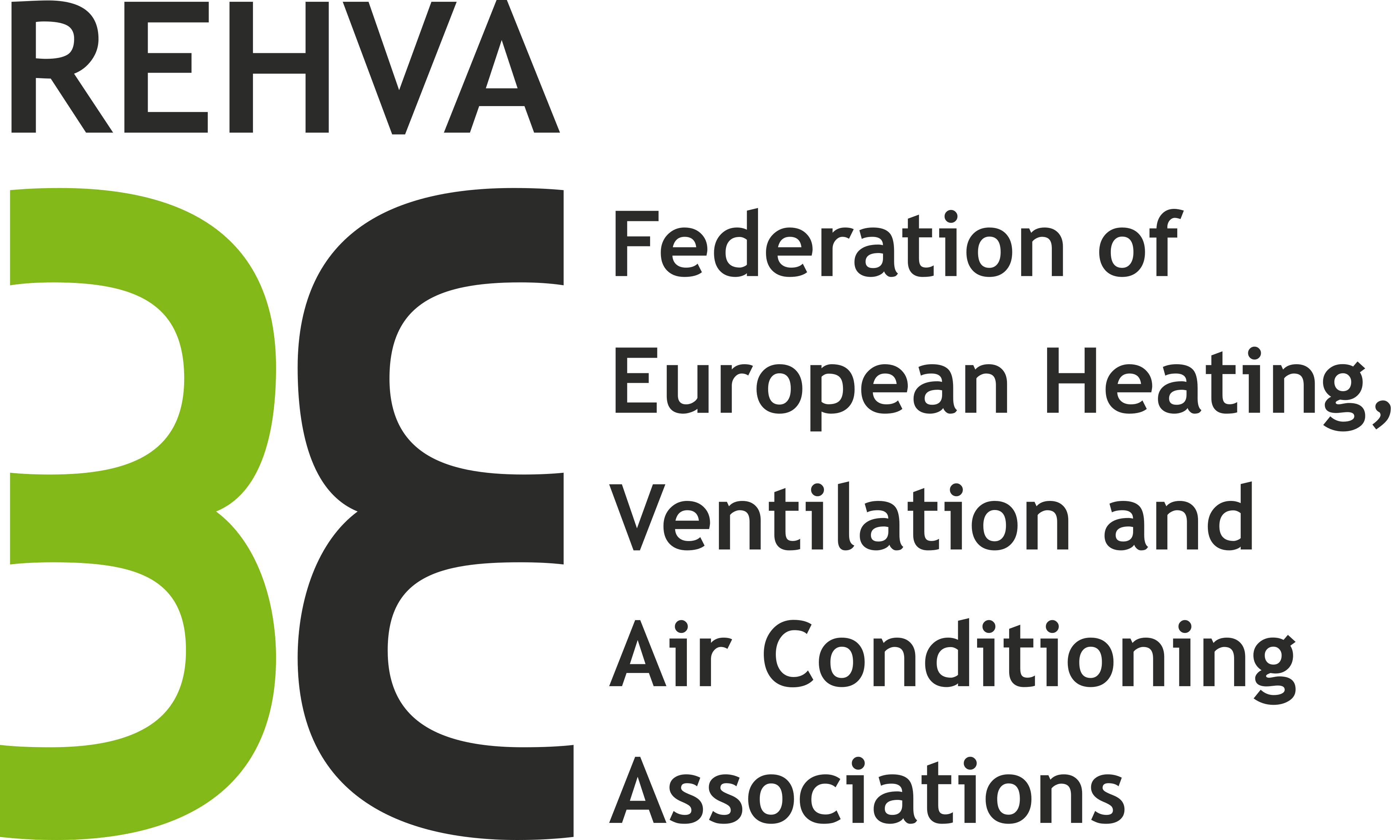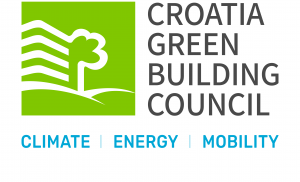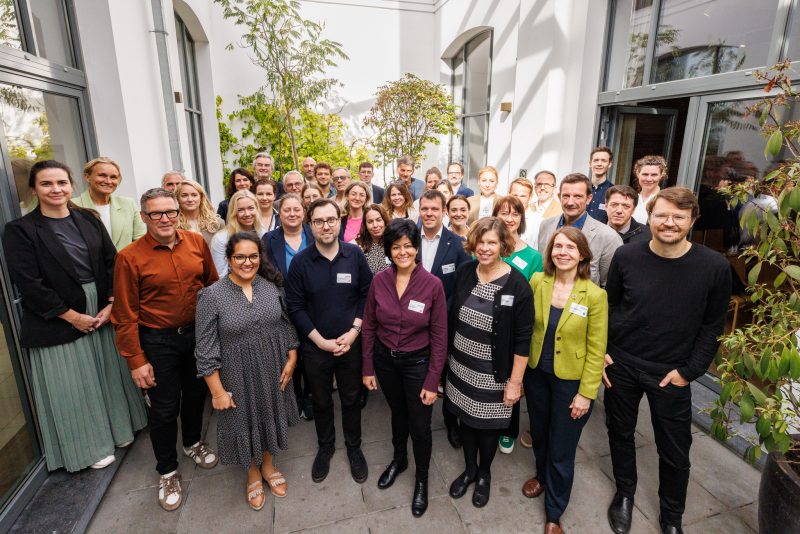
©Octavian Carare
On September 21st and 22nd more than 50 built environment experts from policy, building design, project development, real estate investment and housing, spanning 7 European countries came together at befitting iconic Tour & Taxis site in Brussels for the first ever CPEA Summit, dedicated to the theme of “’Radical unlearning’ as a disruptor for market transformation”.
On the packed agenda of the interactive event were 5 core sectoral questions, such as:
- How to successfully create social value on projects?
A with a specific focus of the discussions on affordable housing, place-making, community inclusion and respect of human rights along the value chain. It was noted that while social value is absolutely essential to a holistic and systemic understanding of sustainability it often competes with other KPIs.
- How to adopt and implement a truly integrated approach with regard to ESG?
The main objective was to explore and highlight the risks of a one-dimensional focus on environmental issues, stressing the linkages and cross-impacts between environmental and social and governance ESG dimensions, e.g. between decarbonisation and housing affordability.
- How to ensure that projects safeguard and foster biodiversity rather than contribute to further biodiversity loss?
The overall tenor was that on biodiversity the industry is still in a very theoretical stage and that there is a lack of suitable tools, a need to define the metrics and agreement on what is actually being measured.
- How to get the construction and real estate sector ready for the circular economy and whole life cycle carbon?
Given the complexity of the sector and the issues at hand, training and upskilling were deemed as essential as well as building the business case to illustrate the added value of investing circular practices.
- How to embrace the concept of new simplicity in planning and design?
There were calls for providing proof of the actual performance of a building across the whole life cycle as building performance may sometimes require optimisation over many years to perform as planned but also for a change from measuring CO2 emissions in CO2/m2 to CO2/person to avoid placing the burden of the green transition on low-income members of society who live in low efficiency housing.
In his keynote speech and the ensuing Q&A session, Stefan Moser, Head of Unit, Energy Efficiency: Buildings and Products, within the European Commission gave an overview of what is currently on the menu in terms of the latest EU policy initiatives with relevance to real estate and construction.
The rich and inspiring discussions showed that, while the sector may be still at the beginning of the journey in relation to unlearning practices and mindsets regarding the topics on the summit agenda there was strong commitment amongst summit participants throughout the course of the two-day event to embrace disruption and to continue the dialogue.
Against a background of a rapid rise in construction and real estate market engagement with ESG related topics and discourses and an equally growing number of ESG initiatives, this new report by the CPEA ESG Working Group provides a snapshot of where different European players within the construction and the real estate industry currently stand in relation to ESG strategy development, implementation and related disclosures, looking at drivers, risks and challenges and potential solutions.
DGNB featured the report on its blog.
Need for a multi-dimensional ESG approach
According to the findings of the report most of the industry’s ESG engagement and reporting is limited to environmental issues and even here the majority of market participants focus on energy and climate issues and to a much lesser extent on wider environmental aspects such as circularity, biodiversity, pollution or water management.
By mapping the interlinkages and interdependencies between all ESG components, i.e. environmental, social and governance ESG impact areas and associated criteria, Working Group industry experts illustrate that sector stakeholders need to take a wider view if they want to avoid risks of perceptions of ESG-washing in the future. For example, there are direct links between decarbonisation targets and social outcomes which in turn also have a bearing on an organisation’s governance performance.
Contrary to general belief within the industry that governance issues only relate to the organisational level, Working Group also members demonstrate that the corporate level governance structure strongly influences the policy and strategy framework for implementation at the building or site level and, that in turn, data and documentation from the latter help inform strategy development, proof of compliance and support delivery of top-level policies and commitments.
Recommendations
Based on Working Group members’ expertise and practical examples, the report features a series of recommendations for both policy makers and market participants. On the policy side, Working Group members call for the development of an “all in one” Sustainable Buildings Directive based on Level(s), the aggregation and prioritisation of policy initiatives and the introduction of digital building logbooks to overcome existing data barriers. In terms of market practice, recommendations include the creation of a new market rule book with the obligation to prove the case “ESG compliant” on the basis of third-party verified data with penalties for greenwashing and the setting of macro-objectives with ongoing monitoring and regular reviews as part of a longer-term perspective ESG roadmap.
“CPEA welcomes the Commissions work regarding the EU Taxonomy Circular Economy criteria as a valuable trigger to speed up the much-needed sectoral transition and is fully supportive of the overall concept and thinking behind the revised criteria for a transition to a Circular Economy. However, we are concerned regarding their level of ambition which may turn out to be challenging in terms of large-scale market application. To avoid creating uncertainty in the market, we deem it necessary to provide unambiguous definitions of scope and methodologies or, alternatively, to align the proposed criteria with existing and tested methodologies and tools.”
Find it on the website of the European Commission here.
Participation is free of charge. Register here.
The seminar will cover LCA in the context of materials, including policy, product regulation and data perspectives, and explore how this may impact future product development and use in projects. All seminar participants are invited to contribute to the subsequent Q&A session.
We are delighted to welcome as panelists:
- Jonna Byskata, Head of EU Public Affairs, Kingspan Global
- Zolt Toth, Senior Project Manager, BPIE – Buildings Performance Institute Europe
- Pablo Van Den Bosch, Director and Co-Founder, Madaster
Ursula Hartenberger, Secretary General of CPEA, will host the discussion.
On Wednesday 15 March, CPEA is organising a digital event on “LCA in the context of the EU’s 2050 decarbonisation targets”.
The panellists will discuss how to address the need to widen the scope and extend timelines regarding LCA against the backdrop of EU legislation and targets and implications for practical application on projects. All participants are welcome to contribute to the subsequent Q&A session.
We are delighted that Johannes Kreissig, CEO of the DGNB German Sustainable Building Council, and Frank Hovorka, Director AICVF have been able to make time in their busy schedules at MIPIM to share their thoughts and insights as part of this Master Class which will be hosted by Dr. Christine Lemaitre, CEO of the DGNB German Sustainable Building Council and CPEA President.
The property industry is not prepared for the transformation to a circular economy as mandated by the European Union.
This was the outcome of a recent study conducted by a study consortium consisting of the German Sustainable Building Council (DGNB), the Spanish (GBCe), the Danish (RFBB), the Dutch (DGBC), the Swiss (SGNI) and Austrian Sustainable Building Council (ÖGNI), as well as CPEA. They were joined by 29 market participants from Austria, Belgium, Denmark, France, Germany, Ireland, Spain, Switzerland, the Netherlands and Turkey.
Based on actual construction projects, the study examined the market-readiness of the circular economy criteria proposed in the EU taxonomy. Its conclusion: not a single project could be considered taxonomy-aligned. Two aspects that proved particularly problematic were the reuse of material content and the use of recyclates. There was also insufficient information and a lack of circular construction methods. Launched by the European Union in 2020, the EU taxonomy is a classification system for sustainable investments aimed at accelerating carbon-neutral transformation on the European continent.
On 22 February 2023, the Taxonomy Study on Circular Economy was launched with a digital event during which its results as well as the derived recommendations were presented. You can watch a recording of the event here:
In March 2022, the EU Platform on Sustainable Finance proposed taxonomy screening criteria for new construction and renovation of buildings that contribute to the circular economy. To evaluate the marketability of the proposed technical screening criteria, a study consortium consisting of the German Sustainable Building Council (DGNB), the Spanish (GBCe), the Danish (DK-GBC), the Dutch (DGBC), the Croatian (CGBC) and the Bulgarian Green Building Council (BGBC) as well as the Swiss (SGNI) and Austrian Sustainable Building Council (ÖGNI), and CPEA launched a joint study.
At a roundtable on 7 October 2022, the study consortium presented a first interim report with recommendations to representatives of the European Commission and of the Platform on Sustainable Finance so that these can be taken into account in the optimisation of the criteria.
The final report is planned for January 2023. An insight into the recommendations to the EU can be found here.
In March 2022, the Sustainable Finance Platform proposed taxonomy screening criteria for new construction and renovated buildings that contribute to a circular economy. In order to transition the proposed technical screening criteria into a functioning system at the very core of a future-proof European economy, the study consortium – the Spanish (GBCe), the Danish (DK-GBC), the Croatian (CGBC) and the Bulgarian Green Building Council (BGBC) as well as the Swiss (SGNI) and Austrian Sustainable Building Council (ÖGNI), the German Sustainable Building Council (DGNB) and CPEA – is planning to carry out a study with the goal of evaluating the marketability of the proposed “EU Taxonomy Screening Criteria for Circular Economy” for construction and real estate activities.
For the practical application of the taxonomy criteria to buildings or projects, the expertise of sustainable building practitioners and respective organisations provide a valuable source of knowledge and skills. Specifically, the question whether organisations are adequately prepared for working with the proposed taxonomy screening criteria is creating uncertainty. We therefore invited financial institutions, property owners and investors to join this unique multi-stakeholder project.
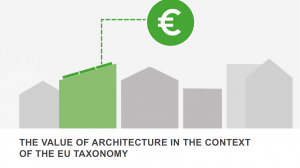 In order to capitalise on the opportunities the EU Taxonomy offers for built environment professionals, CPEA and the Architects’ Council of Europe have published a slide deck, that explains the EU Taxonomy and shows how it creates opportunities for sustainable architectural design, mapping design elements against existing Taxonomy criteria.
In order to capitalise on the opportunities the EU Taxonomy offers for built environment professionals, CPEA and the Architects’ Council of Europe have published a slide deck, that explains the EU Taxonomy and shows how it creates opportunities for sustainable architectural design, mapping design elements against existing Taxonomy criteria.
Join us for the Climate Positive Europe Alliance, AISBL COP26 virtual Cities Workshop:
A Tale of Three Cities – showcasing city climate action in action
Friday 12 November 2021 from 2.00 to 3.30 pm
Cities can do things faster and are often referred to as incubators for at pace and scale climate action on mitigation and adaptation. In the spirit of COP26 Cities, Regions and Buildings Day on 11 November, this interactive workshop will explore what it takes to mainstream and firmly embed climate action at city and local authority level through replicable real life city and local authority leadership examples, each focusing on different angles of climate action with all of them directly responding to the following COP26 themes:
- Securing global net zero by mid-century and keeping 1.5 degrees within reach
- Adapting to protect communities and natural habitats
- Working together to deliver
Core questions covered
- What are the recipes for successful city action on climate change?
- What needs to be in place for cities to further accelerate existing policies and action?
- How do cities ensure citizen engagement and buy-in?
With inputs and insights from:
- Boris Palmer, Mayor, City of Tübingen (Germany)
- Claudia Schrenk, Program Manager DoTank Circular City Wien 2020-2030, City of Vienna (Austria)
- Alejandro Gomez, Coordinator of the Energy Transition Roadmap of València, Valencia Clima i Energia (Spain)
- Christine Lemaitre, Chief Executive Officer DGNB (Germany)
- Presented by Ursula Hartenberger & Raphael Montigel, CPEA
The European Sustainable Finance Platform has published the first draft of the requirements for environmental objectives on circular economy and biodiversity as part of the EU taxonomy. The Climate Positive Europe Alliance (CPEA) participated in the consultation and published a corresponding position paper . For the environmental objective “circular economy”, it is recommended that the economic activities “new construction” and “deconstruction” should not be considered separately. Furthermore, the terms “reuse” and “recycle” should be defined more clearly. The requirements of the environmental objectives “biodiversity” are not ambitious enough in the opinion of CPEA and its members.
End of April, CPEA Secretary General Ursula Hartenberger participated in a podium during the Berliner Energietage:
And who is going to pay for that? Strategies and instruments and new ways of financing buildings on the way to climate neutrality.
In the face of the climate crisis, the transformation of the building sector towards climate neutrality is necessary. Portfolio owners, project developers and investors are starting to plan the decarbonisation of their plants and projects. Targeted strategies for overall portfolios and manageable instruments such as the “building-specific climate protection roadmap” are essential for implementation. But how do you finance it? Taking into account new developments in the “Sustainable Finance” area, the most recent experiences of the first real applications of the proposed “EU Taxonomy Criteria” and the perspective of the private sector, possible strategies and instruments for recording and managing climate protection activities were presented, along with opportunities, requirements and Possibilities of climate protection-oriented financing discussed.
Organized by the German Sustainable Building Council DGNB.
Presented by Dr. Anna Braune, German Sustainable Building Council DGNB, Head of Research and Development.
Panelists:
Johannes Kreissig, German Sustainable Building Council DGNB, CEO.
Ursula Hartenberger, Climate Positive Europe Alliance – CPEA, Secretary General.
Alexander Piur, ING Bank, Head of Innovation and Sustainability Real Estate Finance & Infrastructure.
Monika Fontaine-Kretschmer, Nassauische Heimstätte / Wohnstadt, Managing Director.
Prof. Dr. Tobias Popović, University of Applied Sciences Stuttgart, Co-Head of the Center for Sustainable Business and Management (ZNWM).
Watch the recording of the event (in German):
CPEA EU Green Week Event Summary
The CPEA EU Green Week Partner workshop expert speakers provided participants with valuable insights into how the transition from linear to circular thinking and practice needs to be accelerated. The workshop identified three core elements to accelerate this transition.
- Changing aesthetic perceptions around materials
Large-scale public acceptance of and demand for recycled and reused construction materials are a key prerequisite for mainstreaming circularity in the built environment. Yet, promoting the use of second-hand materials is often still hampered by aesthetic prejudices in our part of the world which is why the concepts of “rebeauty and lovabilty” in relation to (re-)used building materials and components constitute core elements of successfully changing mindsets and embedding circularity principles in design and construction.
- Increasing durability and longevity through new product and design approaches
Increasing the durability and longevity of buildings and materials will greatly contribute to making the sector more circular. New product and design approaches – both regarding biological and technical cycles – are needed to improve adaptability and flexibility to make buildings (and their components ) stand the test of time in terms of resilience and changing user preferences and needs.
- Data, data, data
Progress on market transformation from linear towards circular construction and real estate is largely dependent on the availability of reliable whole-life cycle building data.
CPEA has been talking to two of the CPEA EU Green Week Partner panelists, Bernadette Soust Verdaguer from the University of Sevilla Spain and Pablo Van den Bosch, Founder of the Madaster platform in the Netherlands about practical data gathering and storage approaches that can help market participants to adopt more consistent – and better quality – data capture and management across sectoral activities.
- Bernadette Soust Verdaguer
- Pablo Van den Bosch
CPEA: For a number of years the idea of digital Building Passports, often also being referred to as Digital Building Logbooks (DBLs) has gained traction amongst built environment stakeholders and policy-makers as an effective way to address the persisting sectoral data gaps. Bernadette, as member of the GBC España Circular Economy Working Group you are actively involved in the development of the Spanish Building Passport – what are the respective concrete plans and activities of the Spanish authorities?
Bernadette: At the moment, the Spanish authorities are focused on the renovation of existing buildings and how to increase the number of buildings refurbished with improved energy efficiency performance and reduced operational impacts. However, the Building Passport proposal of the GBC España Circular Economy work group goes beyond this. We think that the current plans are necessary, but that we also need to think about how we can include other aspects such as decarbonisation, covering operational and embodied impacts to integrate the circular economy within current sectoral practices.
CPEA: Pablo, you are the founder of Madaster, an online registry for building materials and products. On the organisational website, Madaster is described as the digital library of materials and there is also mention of a Madaster Passport. So, how does Madaster work?
Pablo: The Madaster platform is a unique, innovative, disruptive online cloud platform providing the user a ‘one stop access point’ to leverage their property data to meet and exceed their environmental, regulatory, health and financial driven ambitions across the full lifecycle of the object. In other words: property developers, owners, and/or operators can create a digital twin of their object in our platform and share, manage this data in the form of asset data, product data or material data. Madaster also automatically processes the files from BIM software and enriches them with data from other public and non-public sources.
CPEA: Bernadette, in practical terms, how can Building Passports help to embed circularity principles in construction and real estate?
Bernadette: We think that Building Passports offer great potential for embedding circularity by integrating information about the building that can be used to extend its life cycle, enable a more efficient use of materials, e.g. through the use of reclaimed or recovered materials, help to plan and organise maintenance and renovation cycles, and ultimately reduce the consumption of resources.
CPEA: Pablo, how does the Madaster Platform support circularity in construction and real estate?
Pablo: Madaster supports circularity by making transparent and visible what materials and products are used and will become available in the future. The more information available, the bigger the chance that reuse can be facilitated, and waste can be eliminated.
CPEA: Who would be typical Madaster users?
Pablo: Typical users would be owners of assets, such as buildings, infrastructure, or other construction types who use the platform for registration and documentation. But also a wide variety of stakeholders who are involved with those assets use the platform too. Examples of those stakeholders are designers and architects, engineers, construction builders, financing institutions (like banks), consultants and product manufacturers. Madaster also supports other platforms and software tools to connect their solutions to the Madaster platform.
CEPEA: Bernadette, how can the introduction of Building Passports support local government in relation to their circularity efforts?
Bernadette: Probably the most promising aspect of the use of Building Passports for local authorities is the harmonisation regarding the use of the information that can help the user to take better decisions aligned with circularity concepts by also integrating information about the materials used. Thus, if these type of tools are implemented in all new and existing buildings, the possibility of reusing, reclaiming, upcycling and recycling building materials would become easier to implement by local authorities. Building Passports also offer the opportunity for direct user engagement and raising user awareness around resource efficiency and circularity issues across the building life cycle.
CPEA: Pablo, how would the Madaster Passport relate to Building Passports?
Pablo: Madaster covers the logbook requirements with respect to static data. Censoring or user data, e.g. operational energy consumption, is not covered by Madaster and needs to be linked to other registrations, such as Building Passports.
CPEA: Have you seen a change in demand for the services Madaster is offering?
Pablo: Yes! We see a growing request to support the large variation of European guidelines to register assets, materials and product data. By supporting these variations in our platform, our European and or global clients do not have to adjust their registration per market which increases their efficiency.
CPEA: Bernadette, what are the next steps for the work of GBC España in relation to Building Passports?
Bernadette: The members of the GBC España Circular Economy Working Group are in the process of preparing a position paper putting forward ideas and relevant issues that we think the tool should address to ensure the inclusion of circularity principles. We are also considering its adaptation to the Spanish context. At the moment, the proposal is close to being circulated and published on the net. We hope that it can contribute to enriching the discussion and support the transition towards a more circular model in the building sector in Spain.
CPEA: Thank you both for sharing your insights!
Join us for the Climate Positive Europe Alliance, AISBL EU Green Week 2021 virtual Workshop:
Changing habits and mindsets – Moving from linear towards circular construction and real estate
Monday 31 May 2021 from 3.30 to 5.00 pm
This interactive workshop will explore what it takes to achieve zero pollution in the construction and real estate sector by mainstreaming and firmly embedding circularity principles in organisational strategies and daily professional practices. The event will facilitate cross-sectoral knowledge and expertise transfer by showcasing replicable real life examples from across Europe and will test the feasibility of wider market uptake through different stakeholder perspectives.
Core questions covered
How to practically achieve zero pollution by mainstreaming circularity?
What are the technical, market and legal/regulatory barriers to achieving zero pollution – and how to overcome them?
With inputs and insights from:
- Ursula Schneider, POS architekten
- Anne-Mette Manelius, Vandkunsten Architects
- Bernadette Soust-Verdaguer, University of Sevilla
- Pablo van den Bosch, Madaster
- Christine Lemaitre, DGNB
- Presented by Ursula Hartenberger, CPEA
To receive the dial-in details for the workshop, please send an email to: r.montigel@cpea.eu
After two years of consultation, on Wednesday, 21 April 21 2021, the European Commission (EC) published the Delegated Act (DA) that spells out in detail the concrete technical screening criteria for achieving a “green investment” label in the EU. The purpose of this so-called Taxonomy is to redirect capital flows to enable sustainable growth. It is an important catalyst for financing the transformation of the European economy to being in alignment with European climate goals in accordance with the Paris Agreement.
Real estate is crucial for the successful transition to a low-carbon economy. It represents 40% of global energy consumption and emits about the same amount of greenhouse gas emissions. In order to stay on a global warming path below 2°C, building-related emissions need to decrease by nearly 80% from 2015 (Paris Agreement) levels by 2050. The Climate Positive Europe Alliance (CPEA) therefore strongly supports the integration of the building sector in the Taxonomy.
However, in contrast to all previous versions of the screening criteria, CPEA regrets that the ambition of the now published final Taxonomy criteria for activities related to construction and real estate have been significantly weakened. Most importantly,
- New Construction: requirements for the primary energy demand (PED) have been reduced by 50% – buildings need to demonstrate PED that is 10% lower than nationally defined NZEB standards (previous iterations required 20%).
- Acquisition and Ownership: buildings built before 2021 need to have an EPC class A; alternatively, they demonstrate to be in the top 15% of the national or regional building stock expressed as operational PED, with no further minimum requirements (previous requirements: top 15% but at least EPC class B).
In CPEA’s view, the requirement for New Construction does not reflect the ambition of the EC to enable market participants to join the transformation needed to future-proof the European economy. On the contrary, it invites the misallocation of funds to non-sustainable activities that in future need to be remedied. A PED that merely outperforms NZEB standards by 10% is too low a starting point. Moreover, with no roadmap for this requirement to increase over time, it will not lead to investments that are in line with national or European climate targets, much less with goals expressed in the Paris Agreement. Instead, it will further cement the perception of the construction and real estate sector as laggard in the fight against climate change.
In the activity of Acquisition and Ownership, the regular path (demonstration of EPC Class A) is ambitious, yet, currently, in most markets not applicable. On the other hand, the removal of a minimum benchmark (at least EPC B) within the alternative eligibility pathway of being in the top 15% of national/regional building stock opens the door for less ambitious assets being included in seemingly green funds/products. At the same time, this alternative pathway is lacking the definitions needed to allow for a true assessment (regional/national remains undefined).
Furthermore, CPEA criticises the lack of trust towards established sustainability certification schemes for construction and real estate that could reliably and independently verify the quality of construction, renovation and/or operation of buildings, including the DNSH requirements.
Finally, CPEA also sees the lack of a clear and reliable transition roadmap regarding higher ambition or changing metrics of and within the screening criteria as a missed opportunity for accelerating climate action and market transformation.
Given the importance of the sector in terms of climate impact, but also in economic terms, with millions of livelihoods depending on it, as well as the social and health implications of healthy and welcoming, affordable homes, CPEA feels that the Delegated Act criteria are short-sighted and disappointing. It does not reflect the existing initiatives and views of developers, investors or operators in the sector that are willing and able to move the market forward, who support CPEA and its founding members.
29/03/2021
Impetus for more climate action in the built environment: Climate Positive Europe Alliance launched
A new European non-profit organisation is setting out to transform the construction and real estate sector towards greater sustainability. The Climate Positive Europe Alliance (CPEA) is a think tank that brings together expertise and market-based practical solutions for the most pressing sectoral challenges in the areas of sustainable finance, circular economy or the intelligent handling of building data and translates them into concrete recommendations for action. At the core of the Alliance’s activities are collaboration and the establishment of a cross-sector dialogue between business and policy-makers.
The EU Commission has set the goal: Europe should become the first climate-neutral continent. To get there, some efforts are still necessary – especially in the construction and real estate sector as one of the main causes of carbon emissions and resource scarcity. “The sector needs to set on a strategic course today in order to be able to achieve our common goals,” says Dr Christine Lemaitre, CEO of the German Sustainable Building Council (DGNB). “This can only be done in European solidarity and in purposeful cooperation between the construction and real estate industries, the financial sector and policy-makers.”
This is precisely where CPEA comes in. The newly founded organisation based in Brussels is backed by the DGNB, the Green Building Council España (GBCe), the Austrian Sustainable Building Council (ÖGNI) and the Federation of European Heating, Ventilation and Air Conditioning (REHVA). Other partners are to follow. “Together we want to significantly accelerate the transformation of the European construction and real estate markets towards sustainability,” says Lemaitre, the Alliance’s new Chair.
CPEA works with a bottom-up approach, focusing on collaboration between key decision-makers in the market. All planned activities and projects are based on a common European understanding of the key requirements of sustainable construction, which is reflected in the DGNB certification methodology. Thus, the Alliance follows a fact-based, data-driven approach based on holistic life cycle considerations.
Four thematic focal points
The new European Alliance will focus its activities on four main topics:
- Sustainable Finance
- Buildings and the Sustainable Development Goals (SDGs)
- Circular Economy
- Building data and information
In the area of sustainable finance, CPEA will continue to support the work of the EU Commission and the Sustainable Finance Platform in further developing the EU Taxonomy criteria. The basis for this is the market study on the applicability of the EU Taxonomy recently conducted and published by various CPEA partners. In addition, a separate “European ESG Working Group” will explore the establishment of a harmonised uniform European ESG standard.
Together with representatives of EU institutions, CPEA wants to work towards putting the SDGs and circularity principles at the centre of existing and future building policy development and actively engage in the development and roll-out of a standardised, central building data repository which will store all relevant building information over the entire life cycle, forming the basis for more informed and more transparent decision-making.
Away from individual interests, towards joint European action
What all topics have in common is that they have an enormous influence on whether the path towards climate neutrality in the building sector can succeed. “All of these topics require close, constructive and goal-oriented cooperation between the market, legislators and the finance and investment community,” says Peter Engert, Managing Director at CPEA co-founder ÖGNI.
“The construction and real estate industry is complex, with many different players and just as many motivations. Understanding these interrelationships and defining ambitious targets based on robust data, ensuring that subsidies are linked to real consumption is essential on the way to a climate-positive Europe,” says Ursula Hartenberger, Secretary General of CPEA.
Ways to participate and collaborate
CPEA invites other European organisations and associations to become actively involved in its work and to collaborate on the various topics. The most important prerequisite is that they pursue the same goals and want to join the Alliance in creating positive momentum based on a common understanding of sustainability.
Press contacts:
Felix Jansen
Director of PR, Communications and Marketing
DGNB German Sustainable Building Council
+49 (0) 711 72 23 22-32 | f.jansen@dgnb.de
Ursula Hartenberger
Secretary General
Climate Positive Europe Alliance – CPEA
+32 (0) 470 852612 | u.hartenberger@cpea.eu
18/03/2021
Bringing together representatives from industry, NGOs, the European Commission and the United Nations, the official launch event of the Climate Positive Alliance Europe AISBL set out the new Brussels based think tank’s mission, objectives and strategic activities.
An expert panel discussion explored core thematic focus areas, including the EU Taxonomy, the need for a pan-European coordination on ESG and practical solutions for capturing, managing and verifying building data.
Watch the recording of the Launch event:
CPEA panelists and guests were in an excellent mood throughout the event
